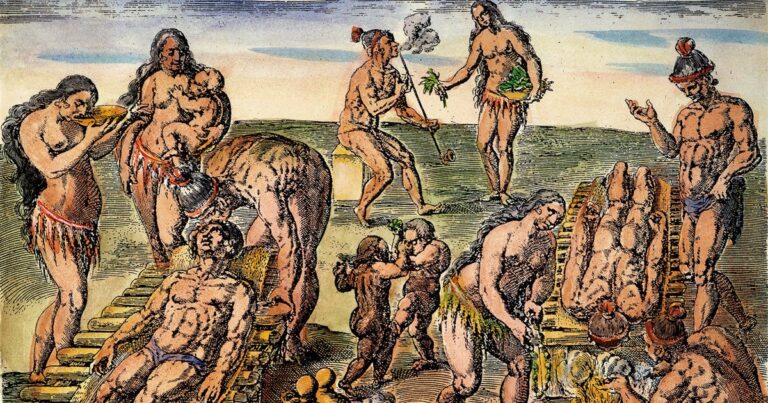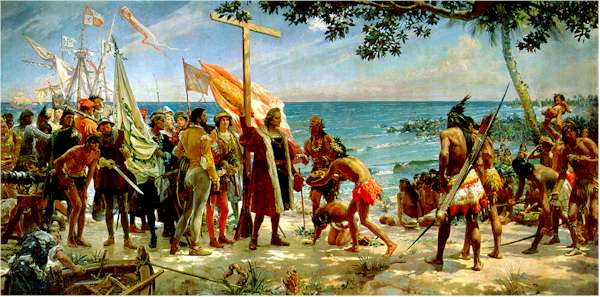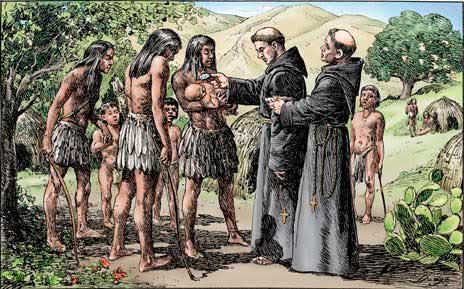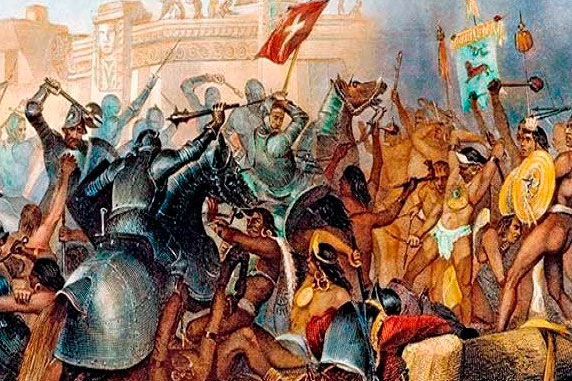The colony, diseases, ignorance of the ancestral organization and its impact on development in life in the Americas
30 years ago, in colleges and schools, in social studies classes, boys and girls learned about the Spanish conquest, about the voyages that European sailors, led by Christopher Columbus, made from the ports of Spain, in search of new lands, and how, in turn, they were advancing discovering more and more territories that soon came under the mandate of the Iberian monarchy.
What the educational system never taught us was the price that the native inhabitants paid for those actions that today are considered as foreign invasion. Initially. European occupation brought an epidemic compared to the bubonic plague, as European diseases were the deadliest weapon against the local people.
The other serious consequences went through the expropriation of territories, the destruction of cultural heritage in favor of a new imposed religion and the consequent loss of identity, and the complete disappearance of indigenous groups, as a consequence of the warlike processes of conquest and colonization.
First things first, diseases

European diseases played a determining role in the Spanish conquest.
It is impossible to speak of the submission of the Native American Indians to the European invaders without speaking of the diseases that they brought (smallpox and measles). Agustín Muñoz Sanz, Spanish doctor spoke in 2012 about how infectious diseases played an important role in the Spanish conquest process, especially in countries like Mexico and Peru.
“In less than a century, several tens of millions of indigenous inhabitants disappeared from their own map. For example, 90% of the Caribbean and Arawak population died in the twenty years following the arrival of Christopher Columbus and his men in 1492, ″ said Muñoz. The Spanish doctor assured that what happened in the 16th century is a great example of what is now known as “traveler’s pathology”, something that we have seen recently with COVID-19 and its spread throughout the planet.
This theory was recently proven by a study carried out by several American researchers, and published by the National Academy of Sciences of the United States (PNAS), which shows how the arrival of Christian settlers to California, on the Pacific coast of that country, had catastrophic effects on the local population.
The study, based on historical and bioarchaeological evidence, estimates that the local population in the mid-18th century grew from 43,285 people to 7,800 individuals after the arrival of the missionaries. “The number of deaths after the establishment of the Spanish missions was probably much higher, especially if the population at the time of contact is underestimated and if the deaths were not recorded,” Brian Codding, historian and leader of the investigation, told in an interview in ElPais.
In that area, before 1769, the inhabitants lived an average of 47 years of age, a life expectancy that was reduced to less than 22 years after the arrival of the missionaries. To smallpox, the common cold, flu, measles, diphtheria, malaria, we must add the processes of expropriation of land, famines, slavery and forced relocations, as the causes of the decline of indigenous populations pre-Columbian at the hands of Europeans.
Ignorance of the ancestral organization

The arrival of the Spaniards to America meant the ignorance of the entire organizational and belief system settled in the pre-Columbian indigenous communities.
Half a century after the arrival of Christopher Columbus in the American Caribbean, in different regions of the “new” continent there were already more or less organized colonial governments, which imposed on aboriginal organizational systems supported, in some cases such as the Mayans, by more than thousand years of history. The new colonial governments caused the “destructuring of the American aboriginal world, that is, the historical evolution of great civilizations and important cultures was interrupted forever.”
Miguel León Portilla, a Mexican expert on the thought and literature of the Nahuatl culture, recovered some verses from the ancient Aztec settlers written in 1524, during the height of the invasive war, and which he labeled as “traumas of the conquest”. These verses show the resignation of the original inhabitants when they saw how everything they believed in fell apart to give way to Spanish impositions. “Perhaps to our doom, perhaps to our destruction, it is only where we will be taken [further], where shall we still go? We are ordinary people, we are perishable, we are mortal, so let us die now, let us perish now, since our gods have already died ”.
@wokkawokkawokka #propagandagringafalsa #cristobalcolon #christophercolumbus #aprendeentiktok
The reduction of the native population also gave way to miscegenation, and the consequent “Europeanization” of the inhabitants of the new world. In various regions of the American continent, some indigenous groups maintained the dominion of large territories, which annoyed the mestizo governors, eager for more power. Territories in the hands of nations such as the Mapuche, Het, Ranquel, Wichí, Qom, Algonquian, Hopi, Comanche, Inuit, in regions such as Patagonia, the Pampean plain, the Gran Chaco, Mato Grosso, the Amazon Region, the Darien, the great plains of the North American west and Alaska, experienced new processes of conquest on the part of the countries already independent of the Spanish crown.
The governments of Argentina, Brazil, the United States and Chile, among others, labeled their inhabitants as “Indians” or “savages”, and thereby justified their warlike actions against them throughout the 19th and 20th centuries. “It seems as if the State is against us,” said Angelina Aspuac, a Maya K’aqchiquel woman ’who fights, along with other Mayan women weavers, for the recognition of her rights as guardians of the Maya community.
Consequences of the conquest

Christianization not only had cultural consequences, but the arrival of missionaries also caused the death of thousands and thousands of native inhabitants.
The consequences that stand out for their importance in the Conquest of America are:
- Disappearance of the political and organizational systems of indigenous peoples (although in each region it occurred at different times).
- Disappearance of many native languages and the near extinction of others. The indigenous languages went to the background, although this process took almost three centuries, and European languages were definitively imposed (they became hegemonic in all American countries).
- Destruction of cultural works of native peoples (texts, works of art, religions, temples, cities, handicrafts, monuments, etc.).
Contempt and stigmatization of native cultures. - Subordination of the original peoples: the Spanish colonizers attributed to the indigenous the category of “entrusted”.
- Slavery and forced labor: there were aboriginal peoples who practiced slavery and the conquerors established it in the same way.
But not everything falls on the negative side. The expansion of Europe towards American lands, allowed the beginning of globalization that we are currently experiencing. New communication and transport routes, mainly maritime, were created between Europe and America. Crops such as tomatoes, corn, cocoa, and potatoes were exported to other parts of the world, and others such as olive trees, rice, coffee, sugar cane, and wheat were introduced to the new world. Farm and pack animals were also brought in, such as the horse, cow, donkey, ox, and sheep, and the use of agricultural technology, such as the wheeled cart, unknown to Native Americans.
